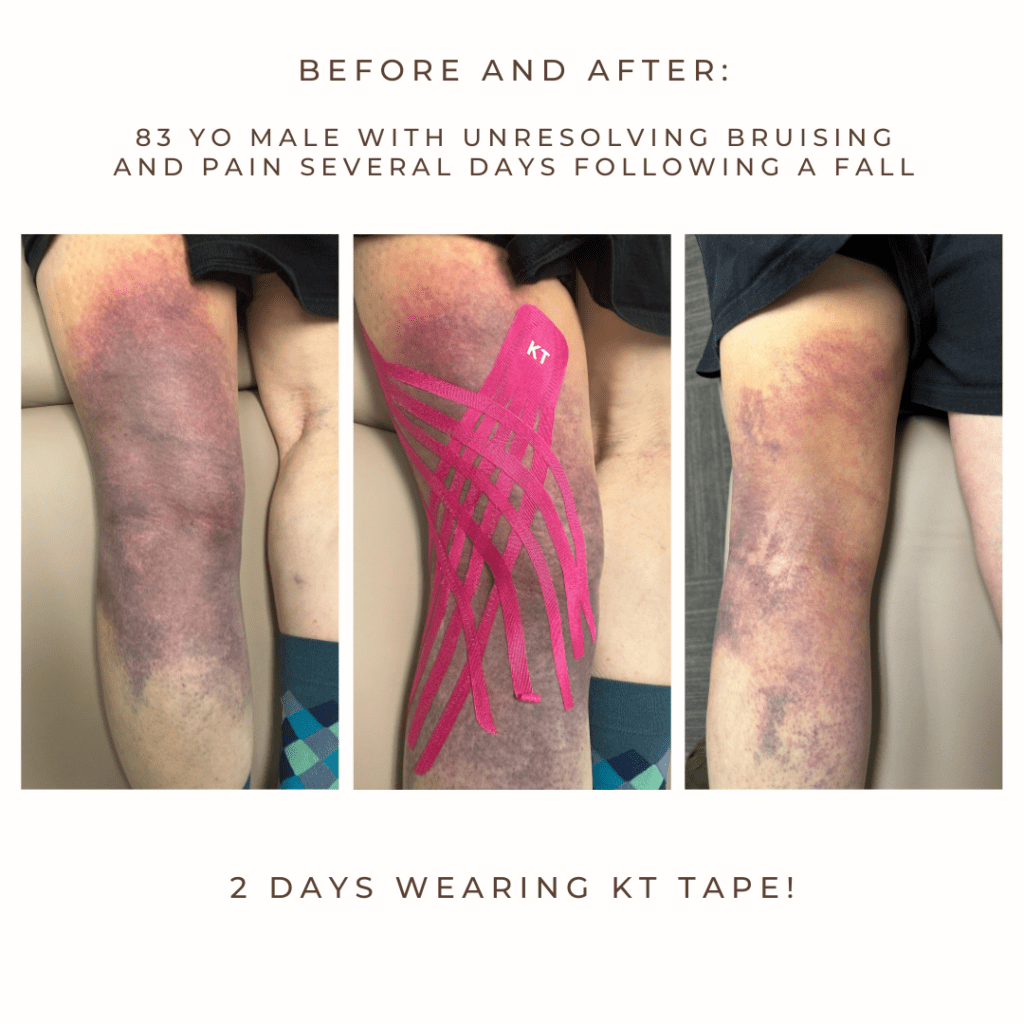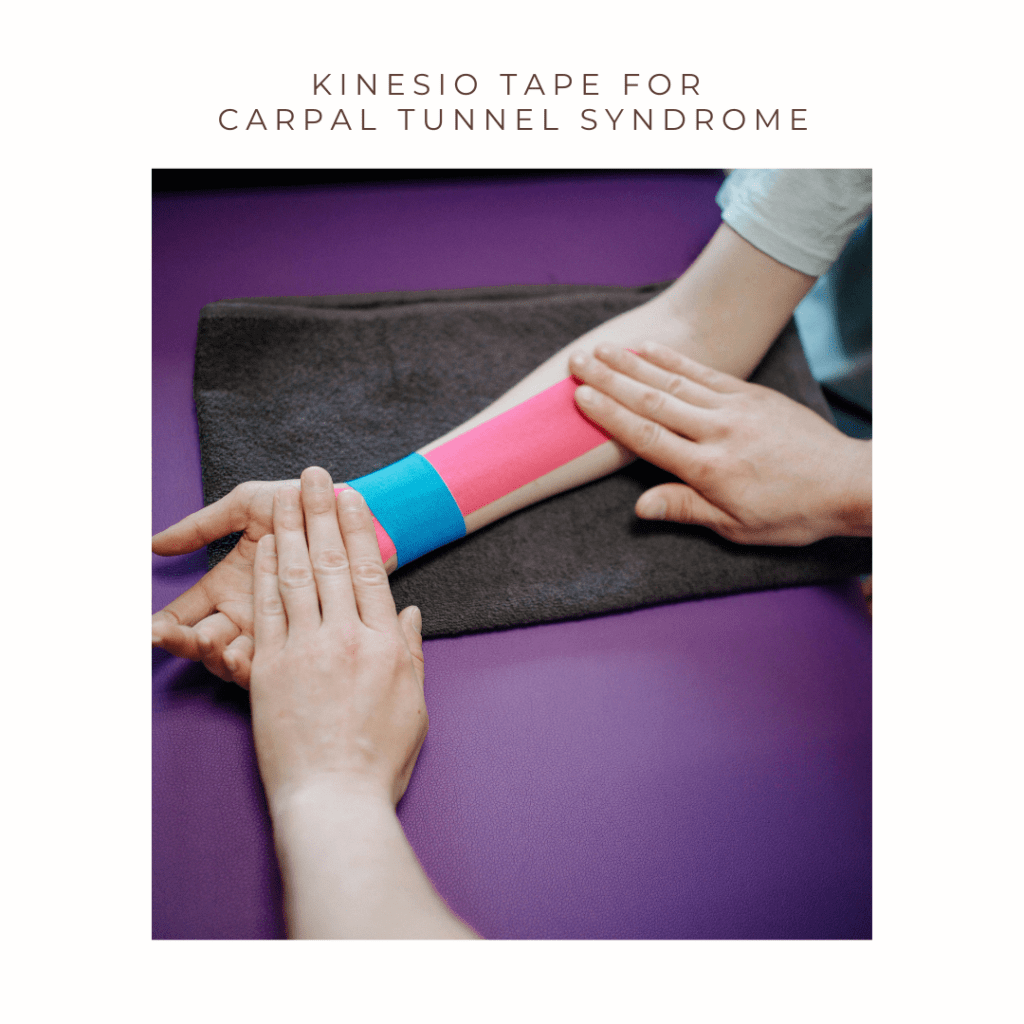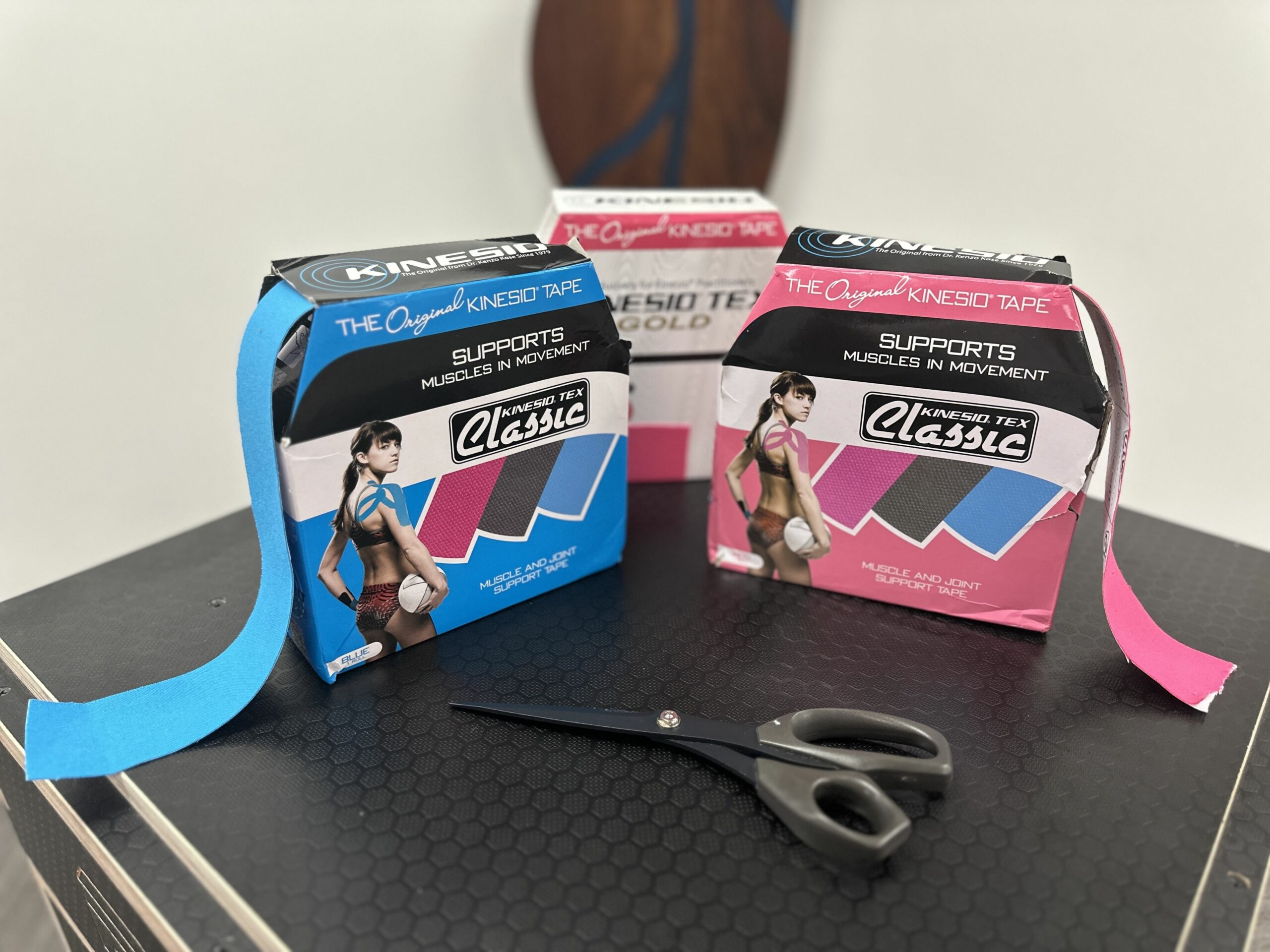An Introduction
Kinesio tape, first introduced to the world during the 1988 Summer Olympics, has steadily gained popularity over the years. Its initial introduction to the U.S. occurred in March 1995 in Portland, Oregon, at the Northwest Athletic Trainers Association Annual Clinical Symposium. Although it began as a relatively niche tool, the 2008 and 2012 Olympics marked a turning point, propelling Kinesio tape into the mainstream. Today, it’s a staple in professional sports and rehabilitation settings around the globe.

What Sets Kinesio Tape Apart?
The tape itself is a marvel of design, utilizing a heat-activated acrylic adhesive applied in a wave pattern—said to mimic the natural waves of fingerprints. It’s made from 100% cotton fibers, which contribute to its elasticity.
The concept of using tape to support or provide tactile input to the body isn’t new. For decades, athletes and trainers have utilized various forms of taping for support. However, Kinesio tape distinguishes itself from traditional athletic tape in several key ways.
One of the most significant differences is that Kinesio tape doesn’t restrict motion like athletic tape. Instead, when applied correctly, the tape allows for natural movement while still providing the necessary support and feedback.
The Stretch Amount Impacts the Results
The versatility of Kinesio tape lies in its application. Depending on the amount of stretch applied, it can increase stability in vulnerable or unstable structures, enhance muscle activation through increased sensory awareness, or reduce sensitivity by continuously stimulating various sensory nerves in the skin.
When applied with less than 50% stretch capacity, the real magic happens. This causes the tape to recoil, creating a slight lift in the skin layers. This lift, which occurs between the epidermis (top layer of skin) and the dermis (just below the epidermis), increases lymphatic drainage, effectively reducing swelling and bruising. Additionally, this recoil is a strong sensory stimulus to our brains, improving our perception of pain and providing tactile input to specific regions of our body.

Need more stability or support of a structure? Increasing the stretch on the tape to greater than 50% of its capacity eliminates the recoil effect and provides the support of athletic tape without restricting motion. When correctly applied there will be no tension in the anchors, prolonging the wear time and comfort, and maximizing the results from the tape.
Beyond its physical support, Kinesio tape also plays a role in facilitating posture changes. The constant tactile stimulus it provides can drastically reduce the time needed to form new habits, making it an effective tool for posture correction.

Numerous studies have shown that Kinesio tape can alleviate pain, which is a game-changer for rehabilitation. By reducing pain, Kinesio tape provides a critical window of opportunity to work on loading weak and vulnerable tissue structures, aiding in recovery and strengthening.
Conclusion
In conclusion, Kinesio tape has revolutionized the approach to taping in sports and rehabilitation. Its unique properties not only support physical structures but also aid in pain management, posture correction, lymphatic drainage, and sensory stimulation. As research continues to explore its benefits, Kinesio tape remains a valuable tool for athletes, trainers, and rehabilitation professionals worldwide.
References
Ghai, S., Ghai, I., & Narciss, S. (2024). Influence of taping on joint proprioception: a systematic review with between and within group meta-analysis. BMC musculoskeletal disorders, 25(1), 480. https://doi.org/10.1186/s12891-024-07571-2
Kase, K., Wallis, J., Kase, T., (2013). Clinical therapeutic applications of the kinesio taping method. 3rd edition.
Luo, Y., Chen, X., Shen, X., Chen, L., & Gong, H. (2024). Effectiveness of Kinesio tape in the treatment of patients with patellofemoral pain syndrome: A systematic review and meta-analysis. Medicine, 103(23), e38438. https://doi.org/10.1097/MD.0000000000038438






